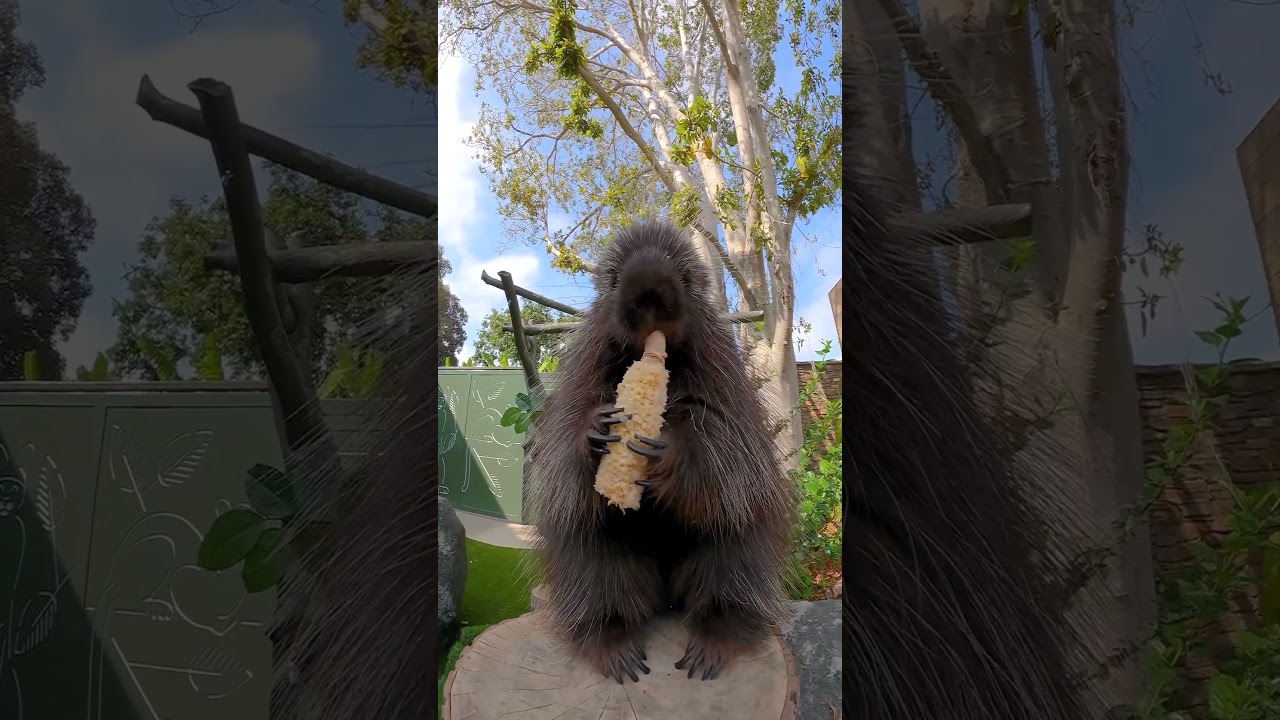- Exploring the biology and behavior of porcupines during a porcu-picnic.
- Understanding the significance of video documentation in wildlife education.
- Integrating zoo management strategies for effective animal care.
- The role of wildlife conservation efforts in enhancing porcupine habitats.
- Engaging the public through interactive zoological experiences.
Porcupines, intriguing creatures known for their quills, offer a remarkable opportunity for learning through a "porcu-picnic." These events are designed to introduce the public to the fascinating world of porcupines in an engaging and educational setting. By observing these animals in a more relaxed and natural environment, participants gain insights into their biology, habits, and importance in ecosystems.
Biology and Behavior of Porcupines
Porcupines are easily identifiable by their quills, but there is much more to them than meets the eye. These rodents are primarily nocturnal and arboreal, adept climbers that spend a significant amount of time in trees. Their diet consists mostly of bark, leaves, and fruit. During a porcu-picnic, observing their feeding behaviors can be particularly enlightening. It highlights their role as important herbivores in forest ecosystems.
The quills of a porcupine serve as a powerful defense mechanism. Each quill has microscopic barbs that make removal difficult once embedded in a predator’s skin. Educating the public about this aspect helps dispel myths that porcupines can "shoot" their quills, a common misconception.
Porcupines have a relatively slow reproductive rate, usually giving birth to one offspring after a gestation period of about seven months. This slow rate of reproduction makes them vulnerable to population declines. During the porcu-picnic, these details foster a deeper understanding of their conservation needs.
Significance of Video Documentation
Creating video documentation of porcu-picnics plays a crucial role in wildlife education. Videos capture the behaviors and interactions of porcupines, offering a visual medium that can reach a broader audience beyond those attending the event. Such documentation can be used in educational programs, social media, and online platforms to increase awareness and appreciation for these unique animals.
Videos also serve as an important tool for scientific research. By analyzing recorded behaviors, researchers can gain insights into porcupine social structures, feeding habits, and environmental preferences. This data is invaluable for developing conservation strategies and enhancing habitat protection efforts.
Zoo Management and Care
Effective zoo management is critical to the success of events like porcu-picnics. This involves creating an environment that mirrors the natural habitat of porcupines. Providing ample climbing structures, diverse vegetation, and spaces for foraging is essential for their well-being.
Nutrition is another vital aspect of care. Zoos must provide a diet that replicates what porcupines would find in the wild, ensuring they receive the necessary nutrients. This includes branches for gnawing, which help maintain their dental health.
Training staff to interact safely with porcupines is also crucial. Education on handling and understanding porcupine behavior helps prevent stress and ensures both human and animal safety during the picnic.
Conservation Efforts and Habitat Enhancement
Porcu-picnics offer a platform to educate the public about wildlife conservation. Porcupines, like many species, are affected by habitat loss, climate change, and human encroachment. Raising awareness about these issues is key to rallying support for conservation initiatives.
Efforts to protect porcupine habitats include reforestation, controlling invasive species, and establishing protected areas. These measures help preserve the ecosystems that porcupines rely on and support biodiversity.
Involving local communities in conservation practices is another vital strategy. By educating the public on how they can contribute to conservation efforts, such as supporting sustainable forestry and minimizing land development, zoos can foster a cooperative approach to protecting wildlife.
Engaging Public Experiences
Interactive experiences like porcu-picnics are effective in fostering a connection between people and wildlife. By allowing individuals to observe and learn about porcupines in a hands-on setting, zoos can inspire a sense of stewardship and responsibility towards the environment.
These experiences also add an educational layer to zoo visits, making them not just about entertainment but also about learning. This approach aligns with the increasing expectation for zoos to serve as conservation and educational hubs.
Porcu-picnics can be part of a larger outreach program that includes talks, guided tours, and interactive displays. This comprehensive approach ensures that visitors leave with a deeper understanding and appreciation of the natural world.
In conclusion, the concept of a porcu-picnic is both innovative and beneficial. It highlights the importance of understanding and preserving wildlife through engaging, educational, and conservation-focused initiatives. By exploring the biology of porcupines, the significance of video documentation, zoo management strategies, and the role of conservation, these events provide a holistic view of how humans can positively impact the environment.
*****
Source Description
Facebook – https://www.facebook.com/SanDiegoZoo/
Instagram – https://www.instagram.com/sandiegozoo/
Twitter – https://twitter.com/sandiegozoo
Giphy – https://giphy.com/sandiegozoo
TikTok – https://www.tiktok.com/@sandiegozoo
Twitch – https://www.twitch.tv/sandiegozoo


